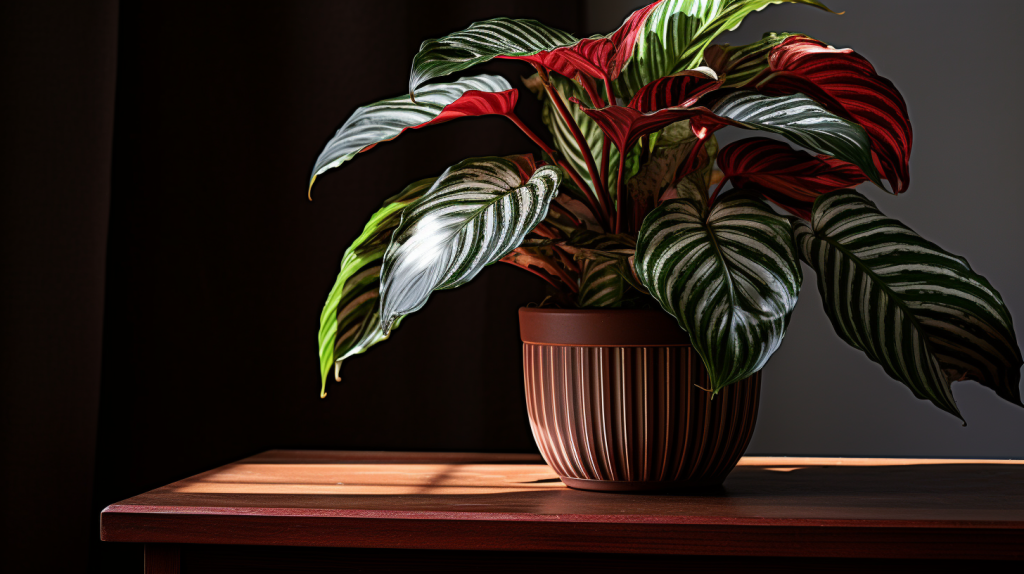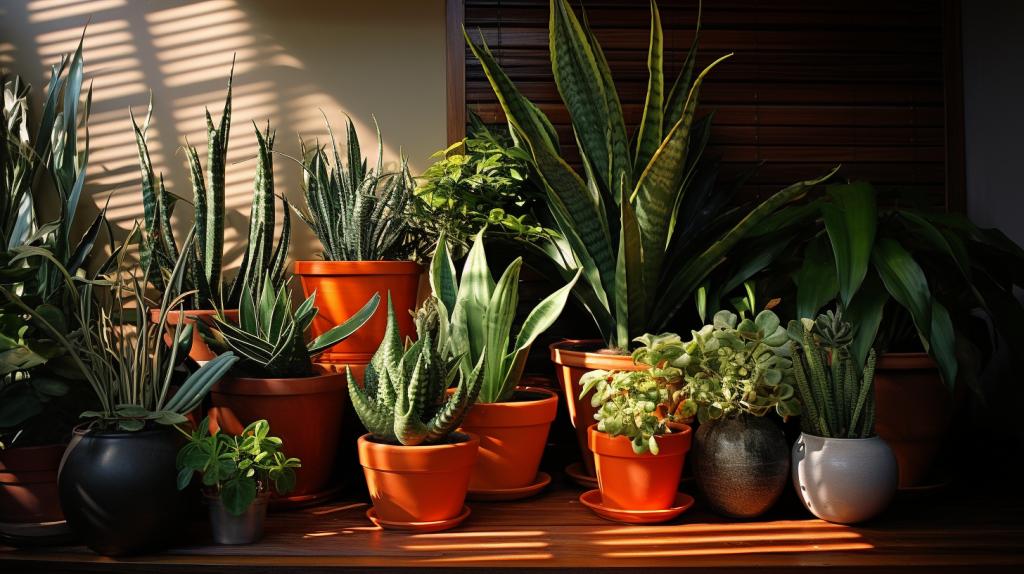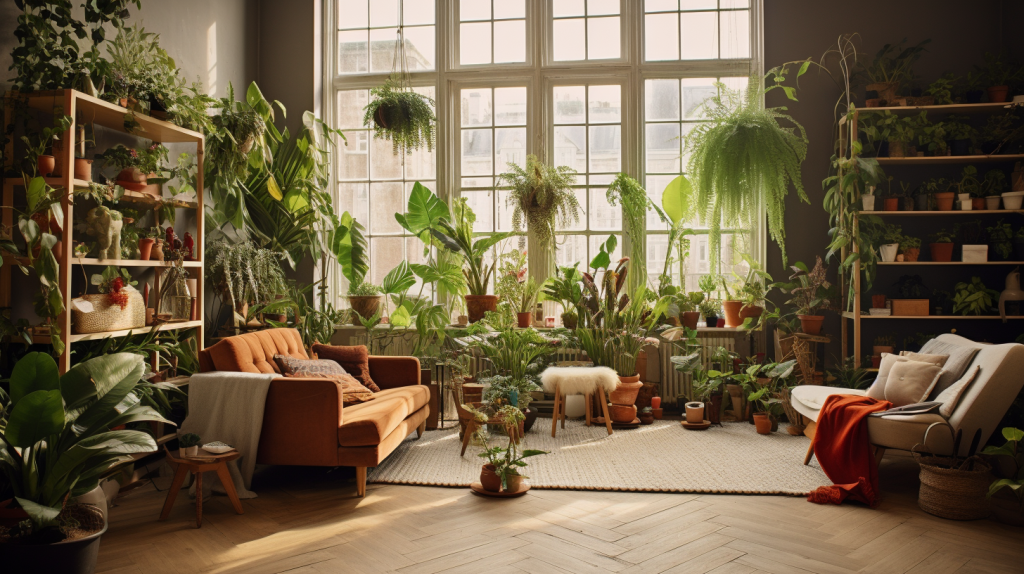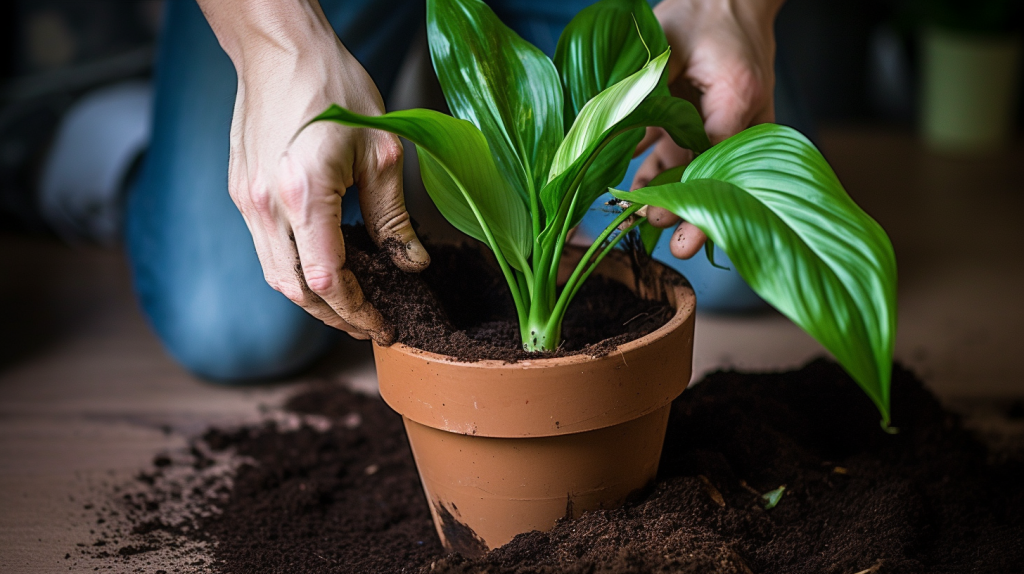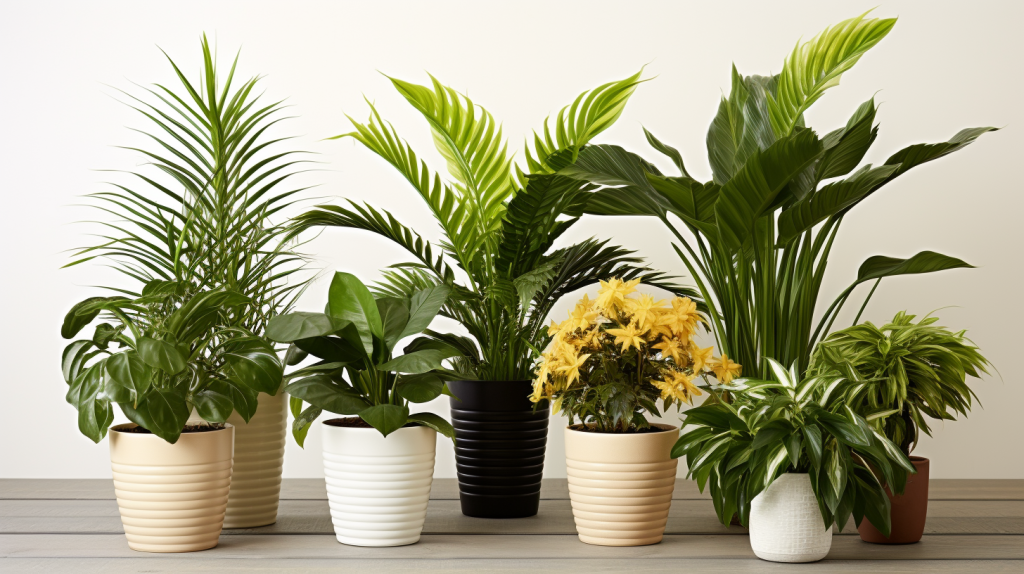Welcome to the enchanting world of the Pin-Stripe Calathea. A plant that combines stunning visual appeal with a refreshing simplicity of care, the Pin-Stripe Calathea has become a favourite amongst both seasoned plant enthusiasts and beginners.
Pin-Stripe Calathea Description
Known scientifically as Calathea ornata, the Pin-Stripe Calathea hails from the family Marantaceae, renowned for their distinctive leaf movements and patterns. The unique appeal of the Pin-Stripe Calathea lies in its striking foliage – luscious dark green leaves that exhibit intricate patterns of pink pinstripes along their veins, a true feast for the eyes.
The underside of these leaves offers a different, yet equally captivating view. Here, you’ll find a deep burgundy shade, providing a stark and beautiful contrast to the leaf’s top surface. Adding to the plant’s allure, these leaves possess a ‘living’ characteristic, moving upwards as the light dims and down as it brightens, almost as if in a dance with the day.
Facts About Pin-Stripe Calathea
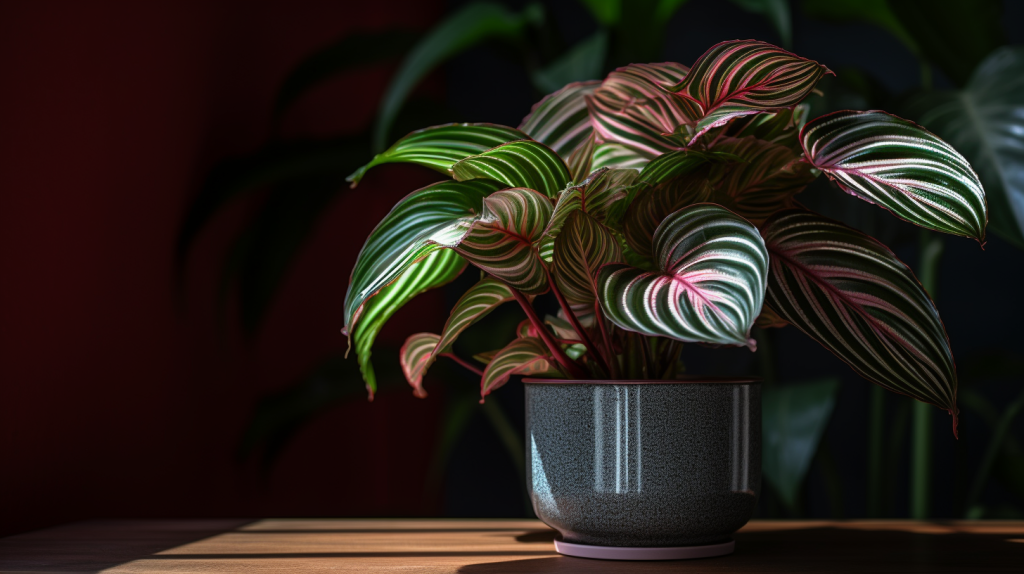
The natural habitat of the Pin-Stripe Calathea is the lush rainforests of South America, specifically within the territories of Colombia and Venezuela. In these tropical areas, the plant thrives under the rainforest canopy, sheltered from direct sunlight but exposed to the region’s high humidity.
Interestingly, the Pin-Stripe Calathea has gained a nickname, the ‘prayer plant’, due to its intriguing habit of lifting its leaves towards the evening, almost resembling a pair of hands in prayer. Plus, it’s a great plant to have if you have pets, since it is non-toxic and poses no harm to cats, dogs, or other household pets.
Care for Pin-Stripe Calathea
The Pin-Stripe Calathea is not a high-maintenance plant, but it does appreciate a certain level of attention and care. This tropical beauty prefers high humidity, so it thrives well in areas like bathrooms or kitchens where humidity tends to be higher. Alternatively, you can use a humidifier or place the plant on a water-filled tray with pebbles to increase the surrounding humidity.
Watering should be consistent, maintaining a good balance without overdoing it. The goal is to keep the soil moist but not soggy, as overwatering could lead to root rot. Watering should be reduced during the winter months when plant growth slows down.
Temperature-wise, the Pin-Stripe Calathea prefers a warm environment. Temperatures between 65-85°F (18-29°C) are ideal. Also, remember to clean its leaves occasionally to ensure they’re free from dust.
How to Grow Pin-Stripe Calathea
Growing a Pin-Stripe Calathea offers a rewarding experience. You’ll want to use well-draining soil to prevent waterlogging. A mixture of regular potting soil and perlite or orchid bark can do the trick.
When it comes to propagation, division is usually the method of choice. During the process of repotting, you can carefully divide the plant into smaller portions, each with its own set of roots, and pot them separately. Patience is crucial here, as it may take a while for your new plants to settle in and start growing.
Problems that May Occur with Pin-Stripe Calathea
Like all plants, the Pin-Stripe Calathea can face some issues. If the leaves start to yellow, it could be a sign of overwatering or poor drainage. Similarly, browning leaf edges are often a sign of low humidity or under watering. Pest infestations, such as spider mites or scale, can also occur if the plant is stressed.
Should any of these problems arise, don’t panic. It’s usually a matter of adjusting the plant’s care conditions to help it bounce back to health. For pests, a mild insecticidal soap can help eradicate them.
Is the Pin-Stripe Calathea Poisonous?
Good news for pet owners: the Pin-Stripe Calathea is non-toxic to pets! But remember, while it’s not poisonous, any plant can cause a mild reaction if ingested, so it’s always a good practice to keep plants out of reach of curious pets.
Is Pin-Stripe Calathea Indoor Or Outdoor?
While the Pin-Stripe Calathea is native to outdoor environments in its homeland, it is mostly grown as an indoor plant in most parts of the world. This is due to its preference for stable, controlled conditions, similar to those of a rainforest understory. However, it can thrive outdoors if the environment closely mimics its natural habitat – high humidity, warm temperatures, and indirect light.
How Much Light Does A Pin-Stripe Calathea Need?
The Pin-Stripe Calathea enjoys bright, indirect light. Direct sunlight can lead to the leaves getting burnt, causing them to lose their vibrant colors. A north or east-facing window, filtered through a sheer curtain, could be the perfect spot for this plant.
Is Pin-Stripe Calathea Fast Growing?
Compared to other houseplants, the Pin-Stripe Calathea has a moderate growth rate. With the right conditions – appropriate lighting, proper watering, and sufficient humidity – you’ll see this plant growing steadily and healthily. Remember, though, growth tends to slow down during the colder months.
To wrap it up, the Pin-Stripe Calathea is a standout choice for anyone looking to add a touch of tropical charm to their home or office. Its captivating appearance, combined with an engaging care routine, promises a fulfilling journey for anyone with a love for indoor plants.
FAQs
Q1: What is the optimal temperature for Pin-Stripe Calathea?
The optimal temperature range for Pin-Stripe Calathea is between 65-85°F.
Q2: Can the Pin-Stripe Calathea tolerate low light?
While it prefers bright, indirect light, Pin-Stripe Calathea can tolerate lower light conditions, although growth may be slower.
Q3: Is the Pin-Stripe Calathea suitable for outdoor cultivation?
Primarily an indoor plant, Pin-Stripe Calathea can be grown outdoors if conditions similar to its natural habitat are provided.
Q4: How often should I water my Pin-Stripe Calathea?
The plant prefers consistently moist soil. However, avoid overwatering as this could lead to root rot.
Q5: What should I do if the leaves of my Pin-Stripe Calathea are turning yellow?
Yellowing leaves may indicate overwatering or poor drainage. Adjust your watering schedule and ensure the plant has well-draining soil.
References
[1] Calathea Ornata Care – How to Grow Pinstripe Plant.” Smart Garden Guide. Link
[2] “Pin-Stripe Calathea: Tips For Growing Calathea Ornata.” Epic Gardening. Link
[3] “Calathea (Peacock Plant / Zebra Plant / Rattlesnake Plant).” Our House Plants. Link [4] “How to Care for Calathea Ornata (Pinstripe Calathea).” Plantophiles. Link

